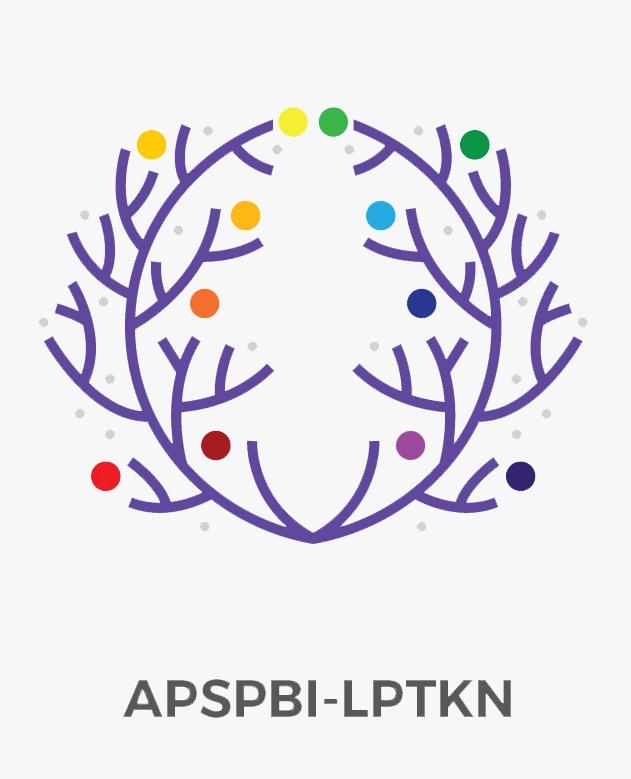THE ATTITUDE OF TRUST SHOWED BY KING DAVID IN HOLY BIBLE IN THE BOOK OF PSALM “THE LITERARY WORK THROUGH POETRY FOR CHARACTER EDUCATION”
 ),
),
(1) Universitas Negeri Manado
 Corresponding Author
Corresponding Author
Abstract
The purpose of the analysis is to find out the attitude of trust showed by King David in Holy Bible in the book of Psalm. This analysis reveals the attitude of trust that is stated by words in poetry in the book of Psalm. Descriptive Qualitative method is used to analyze primary and secondary data from the book of Psalm and also from the articles or books that support the data by using some steps or procedures that is : to organize and prepare all the data needed, read the data which is the book of Psalm and other references then analyze data by identifying the sentences that represent the statement of having a trust of King David to God. The meaning of this learning both theory and practice is expected to give contribution to the readers about what and how trust is and how they apply it well and correctly.
Keywords: attitude of trust, Holy Bible, The Book of Psalm, King David
References
Abdul-Rahman. A, 1997. “The PGP trust model,” Journal of Electronic Commerce.
Bodgan, R and Bikklen, S. 1982.Qualitative Research for Education: An Introduction to Theory and Methods, Second Edition. Boston : Alliyn and Bacon, Inc
Blois K. J. 1999. “Trust in business to business relationships: An evaluation of its status,” Journal of Management Studies, vol. 36, no. 2, pp. 197–215, 03.
Buttyan L and Hubaux. J. 2007. Security and Cooperation in Wireless Networks: Thwarting Malicious and Selfish Behavior in the Age of Ubiquitous Computing. New York, NY, USA: Cambridge University Press.
Chang. E, T. Dillon, and H ussain. F. 2005. “Trust and reputation relationships in service-oriented environments,” ICITA 2005. Third International Conference on Information Technology and Applications, vol. 1, pp. 4– 14 vol.1, july.
Corritore C. L, Kracher B, and Wiedenbeck. S. 2003. “On-line trust: concepts, evolving themes, a model,” Int. J. Hum.-Comput. Stud., vol. 58, no. 6, pp. 737–758.
Dragoni. N. 2009. “Toward trustworthy web services - approaches, weaknesses and trust-by-contract framework,” IEEE/WIC/ACM International Conference on Web Intelligence and Intelligent Agent Technology, vol. 3, pp. 599–606.
Dyke. J. V. 2004. “Establishing federated trust networks among web services,” Bachelor thesis of Science in Computer Engineering, University of Virginia.
Entrust. April 2001. “Web services trust and xml security standards,”.
Gambetta D . 1988 “Can we trust trust?” in Trust: Making and Breaking Cooperative Relations. Basil Blackwell, , pp. 213–237.
Grandison T and Sloman S. 2000. “A survey of trust in internet applications.” IEEE Communications Surveys and Tutorials, vol. 3, no. 4.
Hill, Andrew E and Walton, John H. 2000. A Survey of Old Testament, Ed. 2. Grand rapids: Zondervan
https://www.fidelity.com/life-events/estate-planning/trusts
https://pocketsense.com/trusts-8052432.html - Arthur Luke. July,27. 2017
https://www.dictionary.com/browse/trust
Huhns M. Singh Nand M. P. 2005. “Service-oriented computing: Key concepts and principles,” IEEE Internet Computing, vol. 9, pp. 75–81.
Jøsang. A, Ismail R, and Boyd C 2007. “A survey of trust and reputation systems for online service provision,” Decis. Support Syst., vol. 43, no. 2, pp. 618–644.
Kalepu. S, Krishnaswamy S, and Loke S. Dec. 2003. “Verity: a QoS metric for selecting web services and providers,” Proceedings Fourth WISEW, pp. 131 – 139.
Kautonen T and Karjaluoto, Eds. 2008. Trust and New Technologies: Marketing and Management on the Internet and Mobile Media. Edward Elgar.
Kelvin. L, Chris K, Anthony N, Marc G, Martin G, Abbie B, and Hans G. February 2009. “Ws-trust 1.4,” Tech. Rep.
Limburg James. 1992. “Psalms, Book of.” Didalam ABD Ed. David Noel Freedman, 5: 522-36. New York : Doubleday.
Malik. Z and Bouguettaya A. 2009. “Reputation bootstrapping for trust establishment among web services,” IEEE Internet Computing, vol. 13, no. 1, pp. 40–47.
Martin M. Shenkman www.laweasy.com
Massa. P and Avesani P. 2007. “Trust metrics on controversial users: balancing between tyranny of the majority and echo chambers,” International Journal on Semantic web and Information Systems.
Maximilien. E and Singh M. 2004. “Toward autonomic web services trust and selection,” in ICSOC, M. Aiello, M. Aoyama, F. Curbera, and M. P. Papazoglou, Eds. ACM, pp. 212–221.
Mayer R. C, Davis J. H, and Schoorman F. D. 1995. “An integrative model of organizational trust,” The Academy of Management Review, vol. 20, no. 3, pp. 709–734.
McKnight. D. H and Chervany N. L. 1996. “The meanings of trust,” Technical report MISRC Working Paper, University of Minnesota.
Mr. Henry Abts III and his firm The Estate Plan http://theestateplan.com
Osborne, Grant T. 2006. “The Hermeneutical Spiral : A Comprehensive Introduction to Biblical Interpretation- Second Edition, revised and expanded”. USA-Illinois : Downers Group – InterVarsity Press.
Papazoglou. M. 2008. Web Services: Principles and Technology. Printice Hall.
Parera, Djos, Daniel. 2004. Teori Semantik. Jakarta : Erlangga.
Stephen Leimberg – The New, New Book of Trusts Alexander Bove – The Complete Book of Wills, Estates and Trusts
Song. R, Korba L, and Yee G. 2007. Trust in E-services: Technologies,Practices and Challenges. IGI Global.
The Holy Bible King James Version. 2011. USA – New York : Hendrickson Publisher.
The National Network of Estate Planning Attorneys http://the.nnepa.com/public/Default.asp?m=p
The American Academy of Estate Planning Attorneys www.aaepa.com/topten.aspx
The National Institute of Certified Estate Planners www.nicep.org
The American Academy of Certified Estate Planners www.americanestateplanners.com
Wang Yand J. Vassileva. 2007. “A review on trust and reputation for web service selection,” in ICDCSW ’07: Proceedings of the 27th International Conference on Distributed Computing Systems Workshops. Washington, DC, USA: IEEE Computer Society, p. 25.
Wellek, rene and Warren Austin. 1956. “Theory of Literature”. New York : Hartcourt, Brace and World.
www.wikipedia.com
Ying-feng Z and Pei-ji S. oct. 2006. “The model for consumer trust in c2c online auction,” ICMSE ’06 International Conference on Management Science and Engineering, pp. 125 –129.
Zacharia. G, Moukas A, and Maes P. 2000. “Collaborative reputation mechanisms for electronic marketplaces,” Decision Support Systems, vol. 29, no. 4, pp. 371–388.
Article Metrics
Abstract View : 1396 times
: 1396 times Download : 26 times
Download : 26 times
DOI: 10.36412/jellt.v4i1.938
Refbacks
- There are currently no refbacks.
Copyright (c) 2019 Journal of English Language and Literature Teaching









